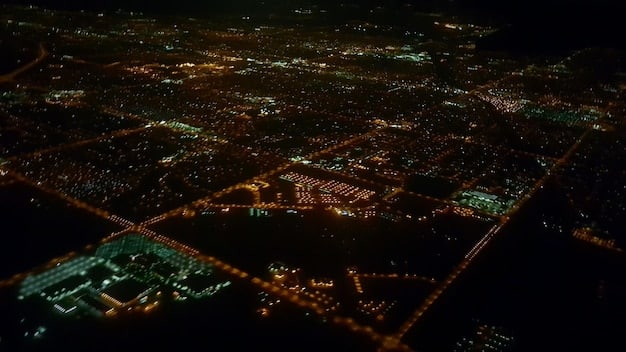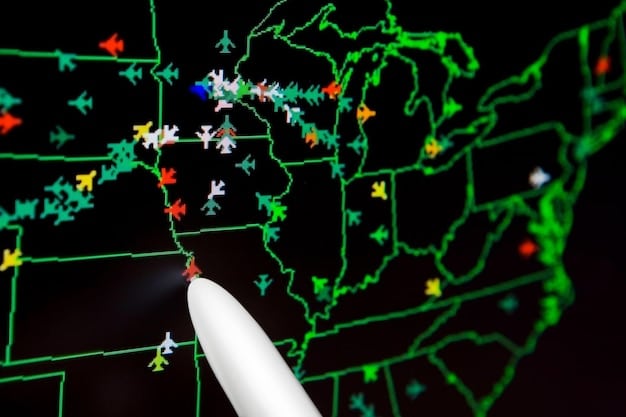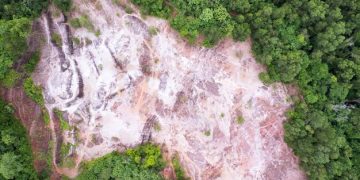Comparing Map Leaks: Verifying Authenticity and Identifying Discrepancies

Comparing map leaks involves scrutinizing unofficial map releases to verify their authenticity and identify any discrepancies through cross-referencing official sources and analyzing data consistency.
In the world of urban planning and cartography, few things generate as much buzz as leaked maps. But how do we know what’s real and what’s not? Comparing map leaks: verifying authenticity and identifying discrepancies is crucial for understanding the reliability of the data we consume.
The Allure of Map Leaks: Why We Pay Attention
Map leaks captivate public attention for various reasons. They offer a sneak peek into future developments, reveal hidden projects, or expose contested data. This allure stems from our innate curiosity about the places we live and the changes they undergo.
Anticipation and Speculation
Leaked maps often precede official announcements and planning documents. This early access allows communities to anticipate upcoming changes, leading to speculation about the impact of these developments on daily life.
Exposing Hidden Agendas
Sometimes, map leaks unveil sensitive information that governing bodies or corporations prefer to keep concealed. This exposure can ignite public debate concerning transparency and accountability in decision-making processes.
Ultimately, the excitement surrounding map leaks arises from the blend of anticipation, information access, and the possibility of uncovering hidden truths about our environment.

Establishing a Baseline: Official Sources and Their Reliability
Before diving into leaked maps, we must establish a foundation based on authoritative data. Official sources provide a reliable starting point for verification and discrepancy identification.
Government Agencies
Governmental organizations serve as primary sources for maps. These agencies include departments of transportation, planning commissions, and geographical survey offices. Their integrity hinges on maintaining accuracy and unbiased data.
Commercial Map Providers
Companies such as Esri and Google Maps provide digital mapping services. While convenient, their accuracy depends on licensing agreements with official data providers and the frequency of updates. Commercial maps offer good resources, but shouldnt be considered gold standard alone.
Establishing a trustable baseline involves careful assessment of the data origin, metadata, and alignment among various recognized sources. Only by thoroughly vetting these sources can we accurately evaluate discrepancies in leaked maps.

Deciphering the Leak: Initial Assessment and Source Evaluation
When a map leak emerges, the first step is to evaluate the leak itself: its origin, how it has been disseminated, and what claims accompany it. Each of these factors provides crucial clues about its potential authenticity.
Tracking Origin and Dissemination
Where did the leak originate? Understanding the source allows an investigation into whether the origin has any links to authoritative map makers. Also, how did it get distributed? Was it a direct release or a grassroots campaign? These investigations bring clarity to the leak’s genuineness.
Cross-Referencing with Known Information
Comparing the map with established datasets, like existing GIS data or previous drafts, helps establish possible accuracy. If the leak aligns with known developments or matches confirmed changes, it adds credibility.
- Confirm Known Landmarks: Cross-check the presence and positioning of buildings, natural features, and major roads that should be unchanged.
- Examine Road Networks: Confirm planned routes, new intersections, and highway extensions versus official planning documents.
- Assess Geographic Coherence: Ensure terrain details like elevation gradients, waterways, and geological features are aligned with authoritative geospatial data resources.
Assessing a map leak demands a critical approach that blends investigation, metadata inspection, and comparison against respected data. These measures support judgments about its possible authenticity and accuracy.
Analyzing Map Elements: Data Consistency and Anomalies
The devil is in the details. After the first assessment, scrutinizing the leaked map, including its symbology and map data, helps reveal contradictions or corroborations.
Symbology and Legend Examination
Legitimate maps use clear and consistent symbols. Scrutinize the map’s symbology to find inconsistencies or irregularities indicating that the map has been modified or falsified.
Data Integrity Checks
Analyzing the geographic data for internal consistency can reveal problems such as misaligned features or improbable spatial relationships, raising questions about the data’s dependability.
Data integrity and symbology scrutiny are crucial in assessing the legitimacy of leaked maps. These methods uncover possible discrepancies, confirming their reliability.
Validating Changes: Expert Opinions and Community Knowledge
While official data and data scrutiny are important, local insight and expert analysis can bring invaluable insights. These resources provide context and validation, which is not always available.
Seeking Expert Assessment
Involving cartographers, urban planners, or GIS professionals in analysis can give an educated perspective. Their knowledge can distinguish between valid and doubtful characteristics, increasing the integrity of the assessment.
Community Validation
Local community feedback can also prove crucial. Residents and regional stakeholders often possess useful, practical knowledge about local geography, recent construction, or suggested improvements that validate—or refute—assertions on leaked maps.
Combining diverse perspectives—from authorities and experts to neighborhood members—promotes a holistic and extensive validation framework that enhances the trustworthiness of map analysis.
Case Studies: Examples of Verified and Discredited Map Leaks
Reviewing prior instances of map leaks that have been validated or disproved can provide insights and context for evaluating new cases. These real examples highlight the difficulties and nuances of confirming unauthorized releases.
Successfully Verified Leak
Consider the example of a transportation blueprint that was leaked before a council meeting. By cross-referencing with environmental reports and interviewing local engineers, journalists corroborated the map’s accuracy, supplying important information to public discourse.
Falsified Leak
In contrast, an urban development map was found to be counterfeit. Discrepancies in zoning rules and construction patterns, combined with an absence of supporting facts from city officials, verified that it was misleading.
These case studies show the need to combine diligent research, expert validation, and neighborhood awareness when assessing map leaks. These methods improve the reliability and openness of urban planning and mapping.
| Key Point | Brief Description |
|---|---|
| 🔍 Official Sources | Reliable starting point for verifying map accuracy. |
| 🛡️ Source Evaluation | Tracking leak origins helps understanding authenticity. |
| 📊 Data Consistency | Examine symbology and geographic data for discrepancies. |
| 🧑🤝🧑 Expert & Community Insights | Feedback from experts and locals provide validation. |
Frequently Asked Questions
▼
A map leak refers to the unauthorized release of cartographic data or urban plans before they are officially made public. This can include proposed developments, updated infrastructure, or sensitive geographic information.
▼
Map leaks generate great interest because they offer a sneak peek into planned changes in the urban environment, enabling people to anticipate future developments and consider their potential effects on communities.
▼
Authoritative sources include government agencies, planning commissions, and reputable commercial map providers. These entities usually maintain accurate, unbiased data essential to confirming the reliability of mapping information.
▼
Community members often possess historical perspectives and local knowledge that can validate or refute details portrayed in leaked maps. This feedback is essential for verifying the precision and applicability of new information.
▼
If a map leak seems suspect, it is important to consult reliable sources, seek expert opinions, and engage with local communities to assess credibility. Reporting false information helps prevent misconceptions.
Conclusion
Ultimately, comparing map leaks: verifying authenticity and identifying discrepancies is an ongoing challenge requiring various abilities and sources. By integrating analytical rigor, expert insights, and public knowledge, we can approach leak analysis carefully, promoting transparency and evidence-based conversations about urban development.





